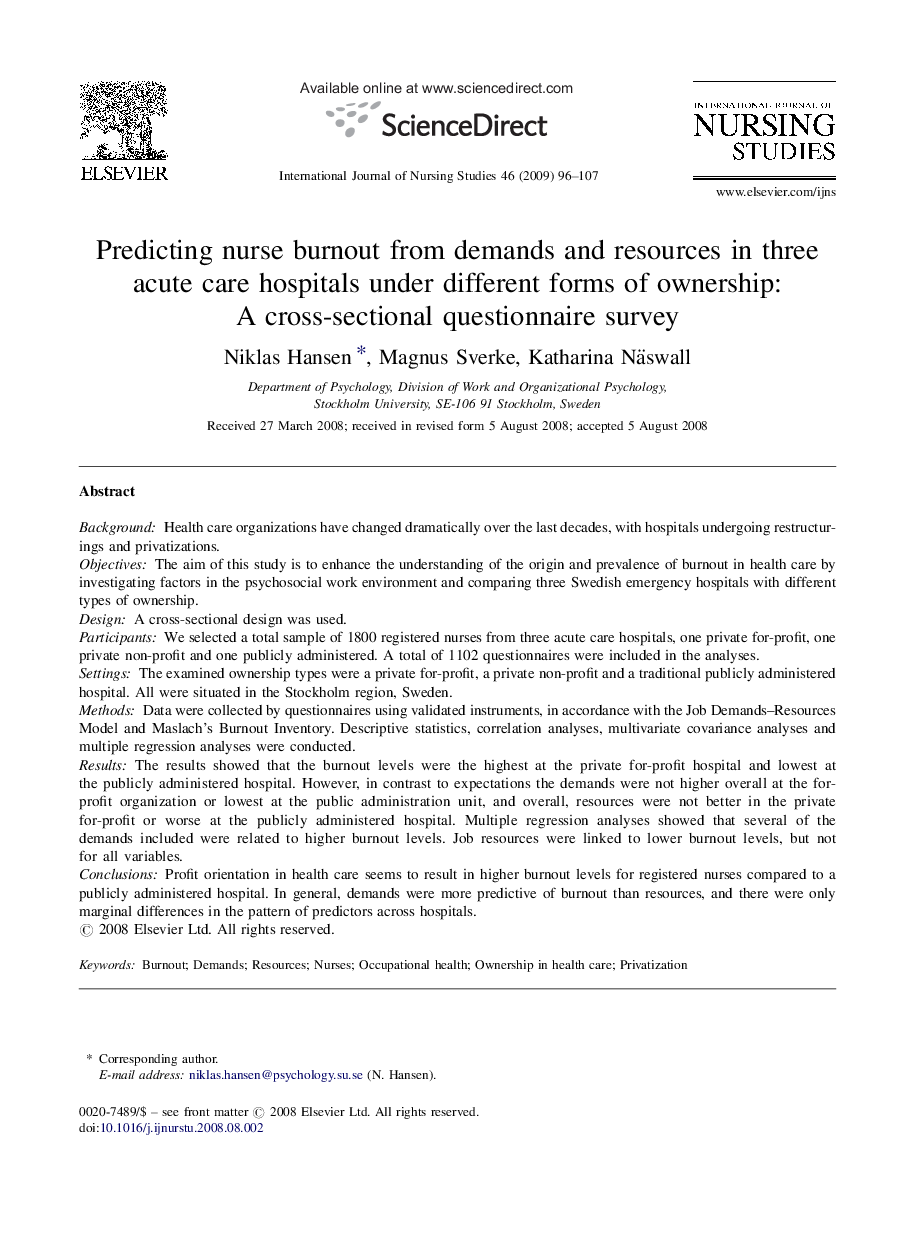| Article ID | Journal | Published Year | Pages | File Type |
|---|---|---|---|---|
| 1076732 | International Journal of Nursing Studies | 2009 | 12 Pages |
BackgroundHealth care organizations have changed dramatically over the last decades, with hospitals undergoing restructurings and privatizations.ObjectivesThe aim of this study is to enhance the understanding of the origin and prevalence of burnout in health care by investigating factors in the psychosocial work environment and comparing three Swedish emergency hospitals with different types of ownership.DesignA cross-sectional design was used.ParticipantsWe selected a total sample of 1800 registered nurses from three acute care hospitals, one private for-profit, one private non-profit and one publicly administered. A total of 1102 questionnaires were included in the analyses.SettingsThe examined ownership types were a private for-profit, a private non-profit and a traditional publicly administered hospital. All were situated in the Stockholm region, Sweden.MethodsData were collected by questionnaires using validated instruments, in accordance with the Job Demands–Resources Model and Maslach’s Burnout Inventory. Descriptive statistics, correlation analyses, multivariate covariance analyses and multiple regression analyses were conducted.ResultsThe results showed that the burnout levels were the highest at the private for-profit hospital and lowest at the publicly administered hospital. However, in contrast to expectations the demands were not higher overall at the for-profit organization or lowest at the public administration unit, and overall, resources were not better in the private for-profit or worse at the publicly administered hospital. Multiple regression analyses showed that several of the demands included were related to higher burnout levels. Job resources were linked to lower burnout levels, but not for all variables.ConclusionsProfit orientation in health care seems to result in higher burnout levels for registered nurses compared to a publicly administered hospital. In general, demands were more predictive of burnout than resources, and there were only marginal differences in the pattern of predictors across hospitals.
